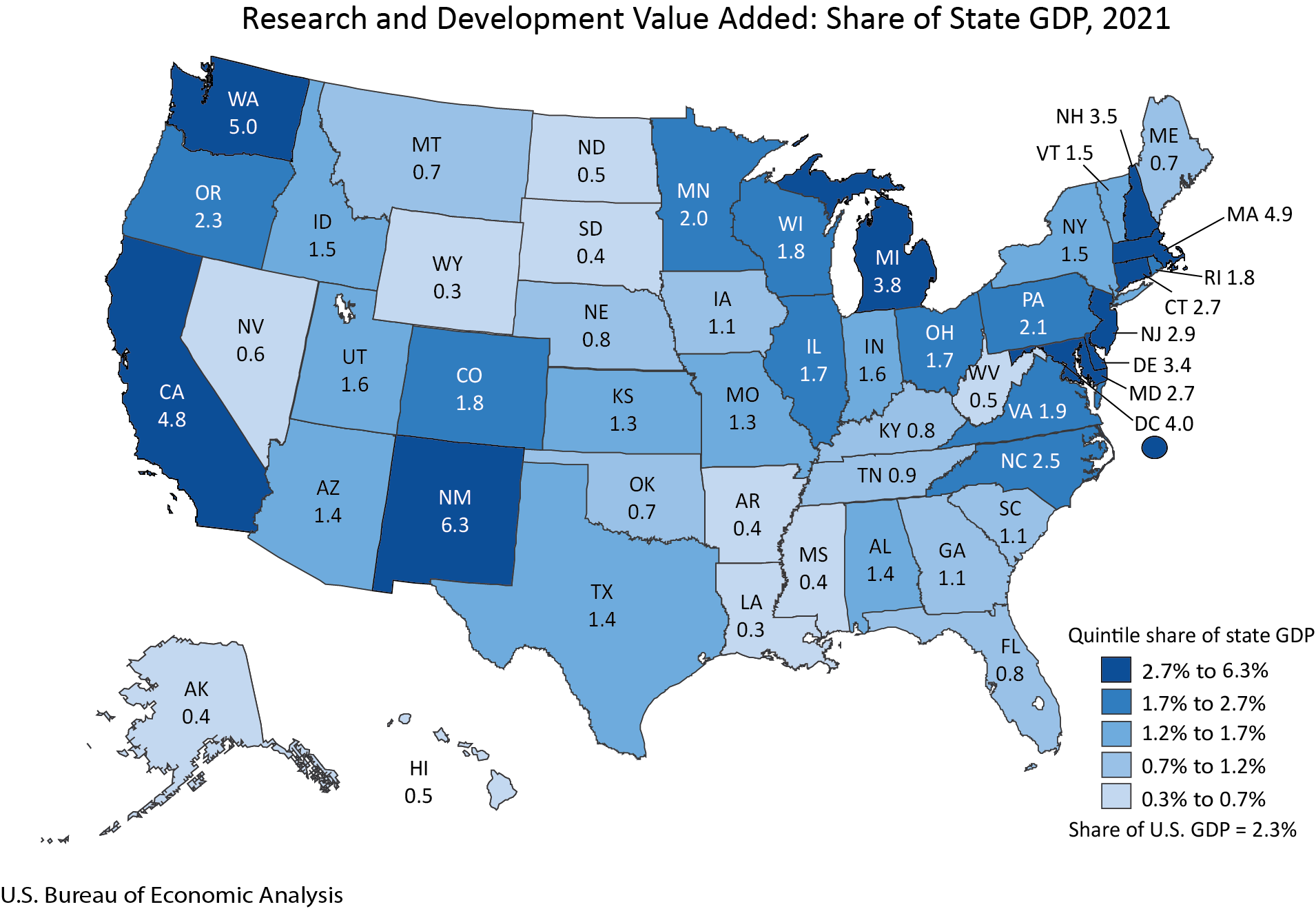Research and development activity accounted for 2.3 percent of the U.S. economy in 2021, according to new experimental statistics released today by the Bureau of Economic Analysis. R&D as a share of each state’s gross domestic product, or GDP, ranged from 0.3 percent in Louisiana and Wyoming to 6.3 percent in New Mexico, home to federally funded Los Alamos National Laboratory and Sandia National Laboratories.
How many research and development jobs are in your state? Which states have the largest R&D value added? How is industry and government research money spread across the states’ GDP? BEA is developing statistics that can help answer these and other questions about the role of R&D in the economy.
The U.S. goods and services trade deficit decreased from $69.5 billion in February (revised) to $69.4 billion in March, as imports decreased more than exports. The goods deficit increased $0.8 billion to $92.5 billion, and the services surplus increased $0.9 billion to $23.1 billion.
Personal income increased $122.0 billion (0.5 percent at a monthly rate) in March. Disposable personal income —personal income less personal current taxes—increased $104.0 billion (0.5 percent). Personal outlays—the sum of personal consumption expenditures, personal interest payments, and personal current transfer payments—increased $172.1 billion (0.9 percent) and consumer spending increased $160.9 billion (0.8 percent). Personal saving was…
Real gross domestic product increased at an annual rate of 1.6 percent in the first quarter of 2024, according to the “advance” estimate. In the fourth quarter of 2023, real GDP increased 3.4 percent. The increase in the first quarter primarily reflected increases in consumer spending and housing investment that were partly offset by a decrease in inventory investment. Imports, which are a subtraction in the calculation of GDP, increased.




